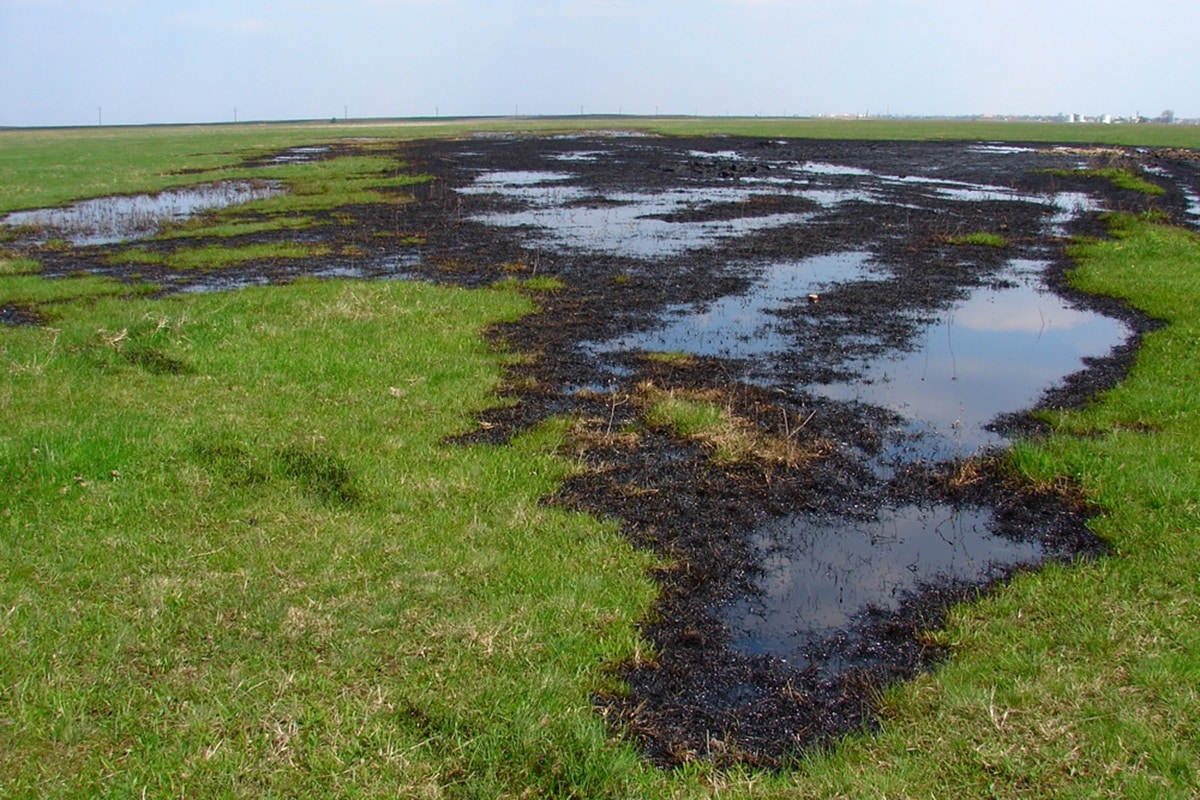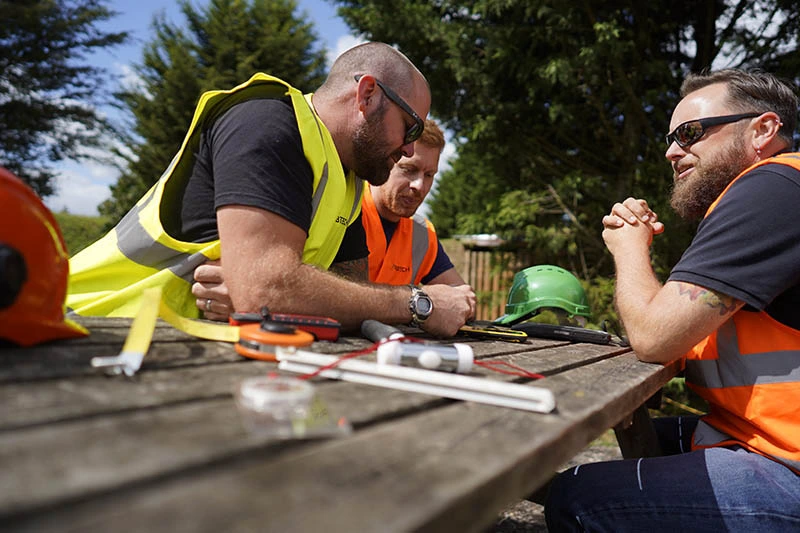Contaminated land: get a risk assessment fast
Contaminated land poses significant environmental, human health, and ecological risks. The presence of hazardous substances in soil and controlled waters can result from industrial activities, waste disposal, or accidental spills. Managing these risks is crucial to ensure public safety and enable the redevelopment of brownfield land.
In the UK, land contamination risk is governed by strict regulatory frameworks to protect people and the wider environment while facilitating the sustainable reuse of land.
Why land contamination poses risks
Contaminated land harbours risk due to the presence of toxic substances, which can persist in soil, surface water and controlled waters for decades. These contaminants can migrate, impacting surrounding areas and entering ecosystems. The risks associated with contaminated sites vary depending on the type of pollutants, the extent of contamination, and the site’s environmental conditions. While international models differ, when assessing unacceptable risk in the UK, key concerns include:
- Human health hazards: The potential impact of direct exposure through inhalation, ingestion, or dermal contact can be illnesses such as respiratory diseases, neurological disorders and cancers.
- Water contamination: Pollutants can leach into groundwater, affecting drinking water supplies and aquatic ecosystems.
- Soil degradation: Toxic substances can alter soil composition, making it unfit for agriculture or vegetation growth.
- Air pollution: Volatile organic compounds (VOCs) and heavy metals can become airborne, posing respiratory risks to nearby communities.

Common hazards on contaminated sites
Contaminated sites requiring thorough risk assessment are often associated with former industrial activities, waste disposal areas, and military installations. Some of the most common hazards found on these sites include:
- Heavy metals: Lead, arsenic, mercury, and cadmium are frequently found on industrial and mining sites, posing significant health risks.
- Hydrocarbons: Petroleum-based substances, such as diesel and benzene, can be present due to spills or leakage from underground storage tanks.
- Asbestos: Common in demolished or abandoned buildings, asbestos poses severe respiratory risks when disturbed.
- Pesticides and herbicides: Agricultural sites may contain residual chemicals that are toxic to humans and wildlife.
- Polychlorinated biphenyls (PCBs): Used historically in electrical equipment, PCBs are persistent pollutants which have serious ecological consequences.

Land contamination risk management
Risks posed to human health and the wider environment
Contaminated land poses a variety of risks to both human populations and the natural environment. Potential risks depend on the type and concentration of pollutants, the pathways through which exposure occurs, and the vulnerability of the exposed population or ecosystem. Polluted land can also have climate change impacts by releasing detrimental ground gases into the atmosphere.
Risks posed to people
- Direct contact exposure: Construction workers and residents may come into direct contact with contaminated soil, leading to acute or chronic health conditions.
- Inhalation of toxic vapours or ground gases: Some contaminants can evaporate and be inhaled, causing respiratory and neurological damage.
- Ingestion of contaminated food or drinking water: Pollutants may enter the food chain through crops grown in contaminated soil or fish from polluted water bodies.
Risks posed to nature
- Habitat destruction: Toxic pollutants can degrade ecosystems, making land uninhabitable for flora and fauna.
- Bioaccumulation: Contaminants can accumulate in wildlife, leading to toxic effects in food chains.
- Groundwater pollution: Persistent contaminants can spread, affecting water quality for miles beyond the source of contamination, potentially affecting controlled waters.

Contaminated land risk management: remediation methods
To mitigate the risks associated with land contamination, various remediation techniques can be employed to remove or neutralise hazardous substances. The choice of remediation method depends on the type of contamination, site conditions, and intended land use.
When conducting a contaminated land risk assessment, consultants will carry out a desk study, historical mapping and a generic quantitative risk assessment to assess pollution levels. This process may be followed by an intrusive investigation and detailed quantitative risk assessment dqra. The dqra aims to clarify the types of pollution present and any threats posed.
This will enable a plan to be drawn up for cleaning the area, with site specific remedial targets established to satisfy planning conditions and comply with part 2a of the Environmental Protection Act. Common remediation strategies include:
- Soil management: There are generally two options for dealing with contaminated soil; it can be physically removed and disposed of at a licensed hazardous waste facility, or it can be washed, which involves separating pollutants from soil particles using chemical or physical treatment.
- Bio-remediation: Micro-organisms are used to break down organic contaminants into non-toxic compounds.
- Chemical treatment: Chemicals, such as oxidants or stabilisers, are introduced to neutralise contaminants.
- Soil vapor extraction (SVE): Volatile pollutants are extracted from soil by vacuum techniques.
- Capping and containment: A barrier, such as clay or a synthetic liner, is installed to prevent contaminant migration.
Why redevelopment of contaminated sites is encouraged
Redeveloping contaminated land, particularly brownfield areas, is encouraged by current UK local planning authorities for several reasons:
- Land conservation: Redeveloping brownfield sites reduces the need to encroach on greenfield areas, preserving natural landscapes.
- Economic benefits: Remediating and reusing contaminated land boosts local economies by creating jobs and attracting investments.
- Public health improvement: Cleaning up polluted sites reduces health risks for surrounding communities.
- Urban regeneration: Restoring derelict or unused sites revitalises neighbourhoods and improves overall urban aesthetics.

Role of a geo-environmental consultant in contaminated land risk assessment
A geo-environmental consultant plays a crucial role in assessing sites and managing land contamination risks. The data collected during a risk assessment enables expert evaluations and recommendations to facilitate safe, site specific land redevelopment, in accordance with part 2a and Environment Agency guidelines. The generic assessment criteria for contamination risk management lcrm includes:
- Site investigation – preliminary risk assessment: While initially a desk study involving scrutiny of historical mapping, an intrusive investigation may be needed to obtain samples of soil, surface water, controlled waters and ground gases for testing.
- Risk assessment process: Detailed quantitative risk assessments are conducted to determine the type and extent of contamination. This enables an evaluation of the potential risks to human health and the environment posed by the contamination.
- Regulatory compliance: Ensuring that remedial targets meet UK environmental laws and Environment Agency standards.
- Remediation targets: Using the site specific assessment criteria and making associated assumptions, consultants can identify the most effective and cost effective remediation techniques. A risk assessment will propose the most suitable solutions, such as sustainable drainage systems or soil washing. In some cases, environmental permit discharge consents may be required.
- Post-remediation monitoring: Conducting follow-up assessments to confirm that the site meets safety standards for future land redevelopment.
Dealing with contaminated land: get a comprehensive risk assessment
Contaminated land poses serious risks to human health and the environment. However, by taking a risk based approach, carrying out a desk study and careful preliminary risk assessment followed by remediation strategies, these hazards can be mitigated to make the land suitable for safe redevelopment. UK local planning authorities encourage the reuse of brownfield sites and planning conditions focus on promoting sustainable development and economic growth.
Engaging a geo-environmental consultant ensures a thorough contaminated land risk assessment, guiding stakeholders toward the optimal remediation approach and protecting them from potential liabilities. Arbtech’s experienced geo-environmental consultants specialise in producing fast, cost effective, professional contaminated land risk assessments. To find out more, fill in the contact form at the top of this page.
By addressing unacceptable risk effectively, polluted sites can be transformed into valuable, thriving assets for communities and businesses alike.


